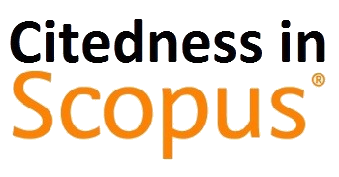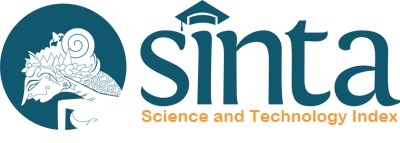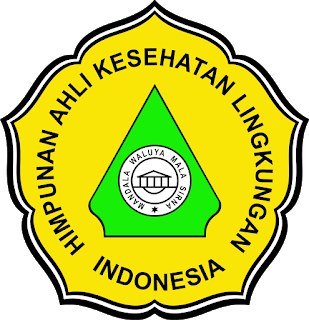Prediction of waste generating levels for the future 5 years (2023-2027) at ganet TPA, tanjungpinang city
DOI:
https://doi.org/10.32382/sulo.v23i2.105Keywords:
Prediction, Garbage, Waste GenerationAbstract
An increase in population growth affects an increase in waste generation, this has an impact on the provision of TPS, TPA, cleaning staff, transportation facilities and infrastructure, and also the operational budget. Predicting the level of waste generation is very important because the results of the predictions can be used to take proactive actions to solve waste problems in the future by the authorities. Therefore this study aimed to predict the waste generation that will affect the number of waste carriers in the next 5 years. The type of this research used descriptive quantitative. The data collection methods in this study by observation, study of documents, and study of literature. The results show that the prediction of the population of Tanjungpinang City in the next 5 years will increase where in 2027 the population is predicted to be 274,883 people and the amount of waste generation will decrease to 29,283 tons/year. This study concludes that the population has increased, waste generation has decreased in the next 5 years and there are no additional transportation facilities. The community is expected to be proactive about the policies carried out by the government and the Ganet TPA management by complying with existing regulations and disposing of waste in its place.
References
Adelodun, B., Ajibade, F. O., Ibrahim, R. G., Ighalo, J. O., Bakare, H. O., Kumar, P., Eid, E. M., Kumar, V., Odey, G., & Choi, K.-S. (2021). Insights into hazardous solid waste generation during COVID-19 pandemic and sustainable management approaches for developing countries. Journal of Material Cycles and Waste Management, 23(6), 2077–2086. https://doi.org/10.1007/s10163-021-01281-w
BPS. (2019). Kota Tanjungpinang Dalam Angka 2019.
BPS. (2020). Kota Tanjungpinang Dalam Angka 2020.
BPS. (2021). Kota Tanjungpinang Dalam Angka 2021
BPS. (2022). Kota Tanjungpinang Dalam Angka 2022.
BPS. (2023). Kota Tanjungpinang Dalam Angka 2023.
Destiana Purwita, L., Sari, E. K., Tirtaweningtyas, S., Widiarko, P., Ramadhan, W., Studi, P., Lingkungan, T., & Baturaja, U. (2022). Proyeksi Pertumbuhan Penduduk dan Kebutuhan Fasilitas Persampahan di Kecamatan Baturaja Timur Kabupaten OKU Projected Population Growth and Waste Facility Needs in Baturaja Timur District, OKU Regency. UEEJ-Unbara Environmental Engineering Journal, 03(01), 2723–5599.
Dinas komunikasi dan informatika kota. (2021). Analisis Statistik Sektoral Kota Tanjungpinang. Tanjungpinang.
Eteruddin, H., Setiawan, D., & Yanti, N. (2023). Analisis Sampah Anorganik ( Plastik ) Daur Ulang Menjadi Bahan Baku. 9(1), 94–102.
Gunawansyah, Laluma, R. H., & Prasetya, A. (2022). Prediksi Volume Dan Ritasi Pengelolaan Sampah. Jurnal Techno-Socio Ekonomika, 15(1), 49–60.
Lai, H., Khan, Y. A., Thaljaoui, A., Chammam, W., & Abbas, S. Z. (2021). COVID-19 pandemic and unemployment rate: A hybrid unemployment rate prediction approach for developed and developing countries of Asia. Soft Computing. https://doi.org/10.1007/s00500-021-05871-6
Mahdi, M. I. (2022). Indonesia Hasilkan 21,88 Juta Ton Sampah pada 2021. DataIndonesia.Id. https://dataindonesia.id/ragam/detail/indonesia-hasilkan-
-juta-ton-sampah-pada-2021
Mutaqin, A. Z. (2018). Pengelolaan Sampah Organik Rumah Tangga Dalam Penanggulangan Pencemaran Lingkungan Di Desa Bumiwangi Kecamatan
Ciparay Kabupate Bandung. Geoarea, 1(1), 32–36.
Ramadhanti, TM. Nurwati, N. 2021. Pengaruh Pandemi Covid-19 Terhadap Angka Kependudukan Di Indonesia. Jurnal Ilmu Kesejahteraan Sosial “Humanitas” Fisip Unpas. Volume III Nomor II
Ruslinda, Y. Asyura, IK. Aziz R. (2021). Pengaruh Pandemi Covid-19 Terhadap Jumlah Sampah di Tempat Pemrosesan Akhir Regional Kota Payakumbuh. Serambi Engineering, Volume VI, No. 4, Oktober 2021
Suryawan,IWK. Septiariva, IY. Suhardono, S. Sari, MM (2022). Korelasi Kondisi Sosial Masyarakat Terhadap Timbulan Sampah Selama Pandemi Covid-19 di Provinsi Bali. Jurnal Ilmu Lingkungan (2022), Volume 20 Issue 4 : 696-703, ISSN 1829-8907
Tiosiarno Hadisbroto, Desi Riani, & Laufried. (2021). Analisis Prediksi Timbulan Sampah Di Kecamatan Jekan Raya. Jurnal Teknika: Jurnal Teoritis Dan Terapan Bidang Keteknikan, 4(2), 100–108. https://doi.org/10.52868/jt.v4i2.2722
UPTD, T. G. (n.d.). Data Timbulan Sampah dan Alat Angkut di TPA Ganet Kota Tanjungpinang (p. 2022).
Prihandoko, D. Setiabudi, DH. (2022). Perbandingan pertumbuhan sampah sebelum dan saat pandemi Covid-19. Kacanegara Jurnal Pengabdian Pada Masyarakat. Volume 5 No. 2
Prihatin, R. B. (2020). Pengelolaan Sampah di Kota Bertipe Sedang: Studi Kasus di Kota Cirebon dan Kota Surakarta. Aspirasi: Jurnal Masalah-Masalah Sosial, 11(1), 1–16. https://doi.org/10.46807/aspirasi.v11i1.1505
Wardani, C. W., & Rahmadyanti, E. (2021). Analisa Kelayakan Fasilitas Dan Sistem Pengelolaan Tempat Pembuangan Akhir (TPA) Benowo Surabaya.
Downloads
Published
How to Cite
Issue
Section
PDF (Bahasa Indonesia) downloaded: 836



















